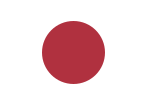Sungkyunkwan University
Sungkyunkwan University (SKKU or simply Seongdae, Hangul: 성균관대학교; Hanja: 成均館大學校) is a private comprehensive research university in South Korea. The institution traces its origins to the historic Sungkyunkwan, founded in 1398 and located in central Seoul. As the foremost educational institution of the Joseon Dynasty, it was governed by the great code of the state administration with royal assent. It was restructured as a comprehensive university in the late 19th century, and has since greatly expanded its course offerings. The university spends heavily on research and development, mostly sponsored by Samsung, Hyundai, and government agencies, producing high-end research scientists including chemical engineering professor Park Nam-gyu, who was named a Clarivate Citation Laureate in 2017 by Clarivate Analytics, and physics professor Lee Young-hee, director of the Center for Integrated Nanostructure Physics in the Institute for Basic Science. Both scientists frequently appear in Nature.
Excerpt from the Wikipedia article Sungkyunkwan University (License: CC BY-SA 3.0, Authors).Sungkyunkwan University
Seonggyungwan-ro, Seoul
Geographical coordinates (GPS) Address External links Nearby Places Show on map
Geographical coordinates (GPS)
| Latitude | Longitude |
|---|---|
| N 37.587222222222 ° | E 126.99416666667 ° |
Address
성균관대학교 인문사회과학캠퍼스
Seonggyungwan-ro 25-2
03063 Seoul
South Korea
Open on Google Maps







